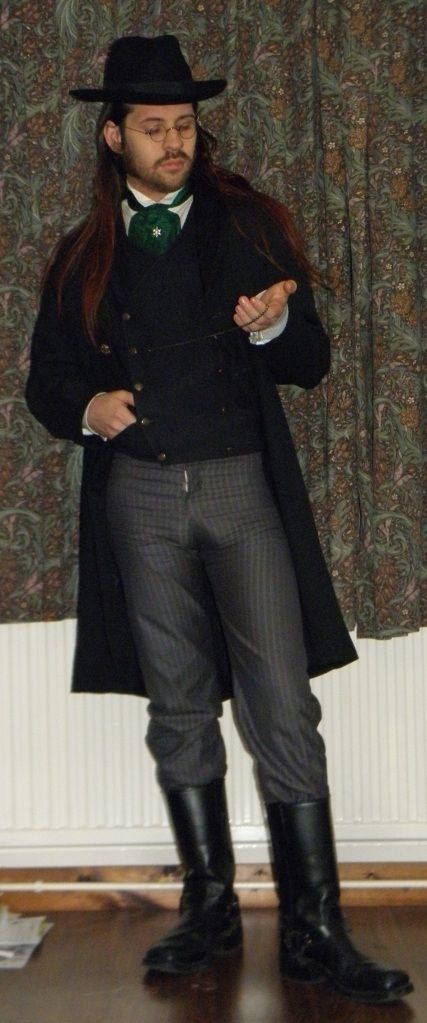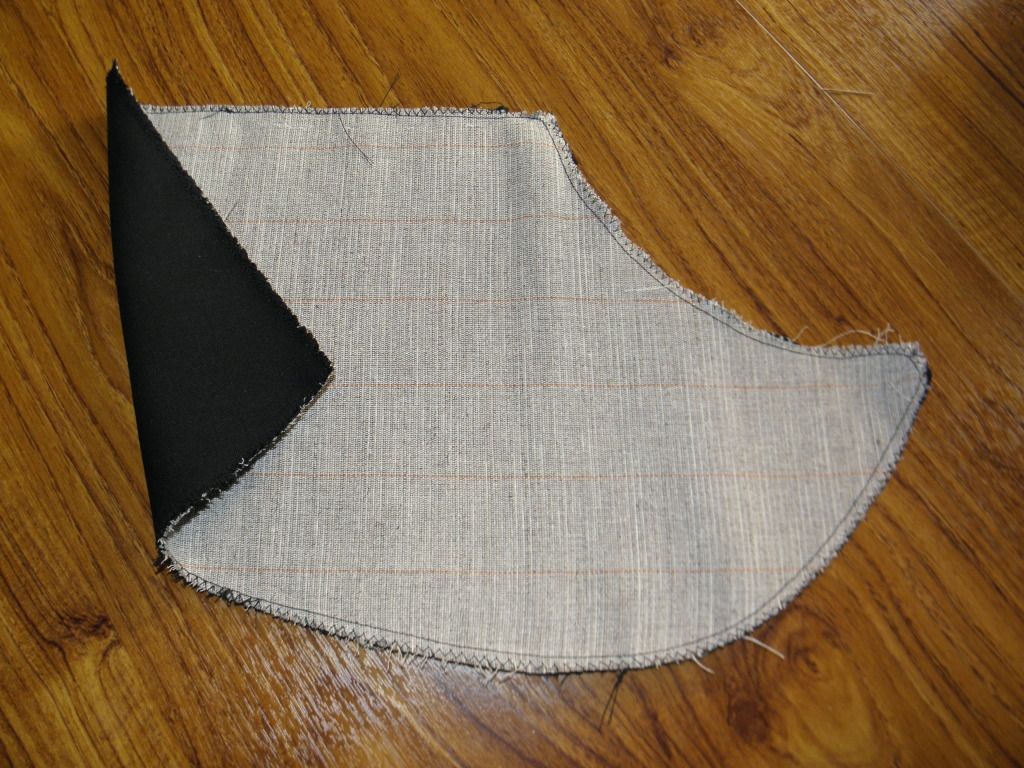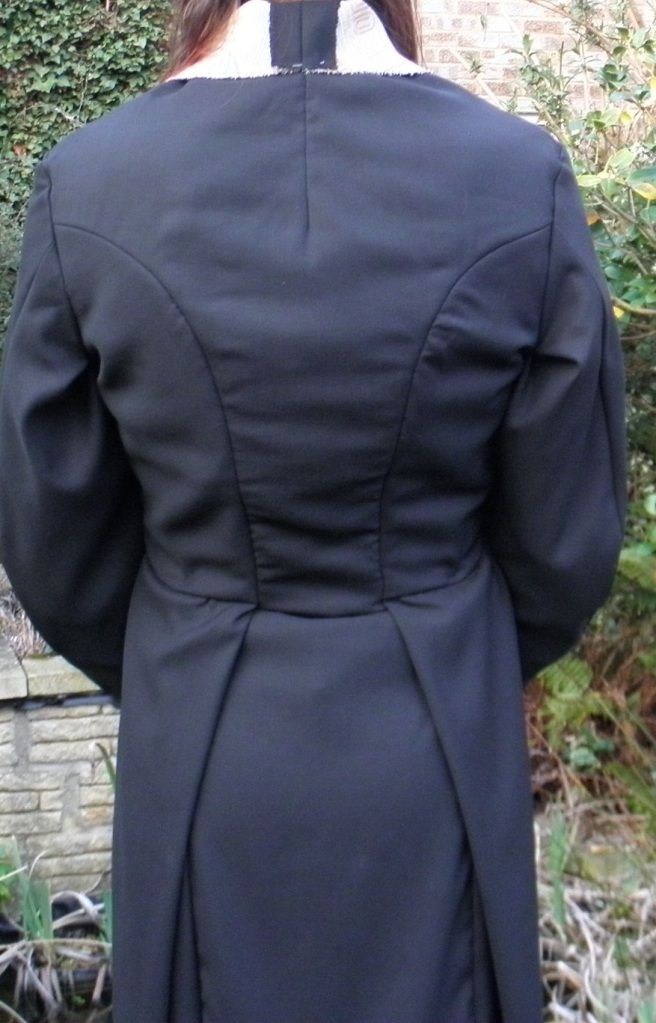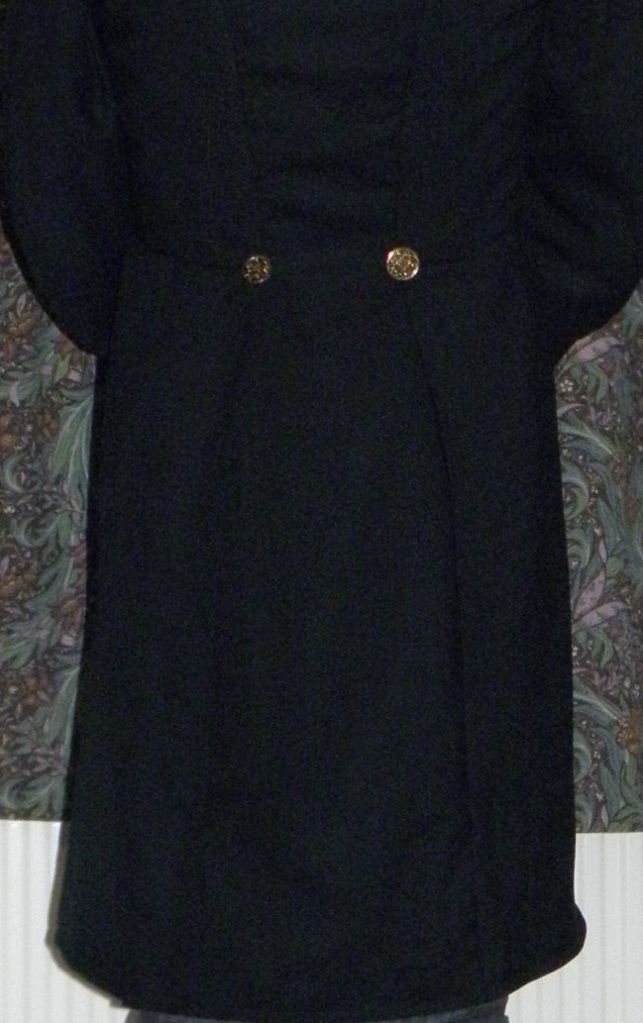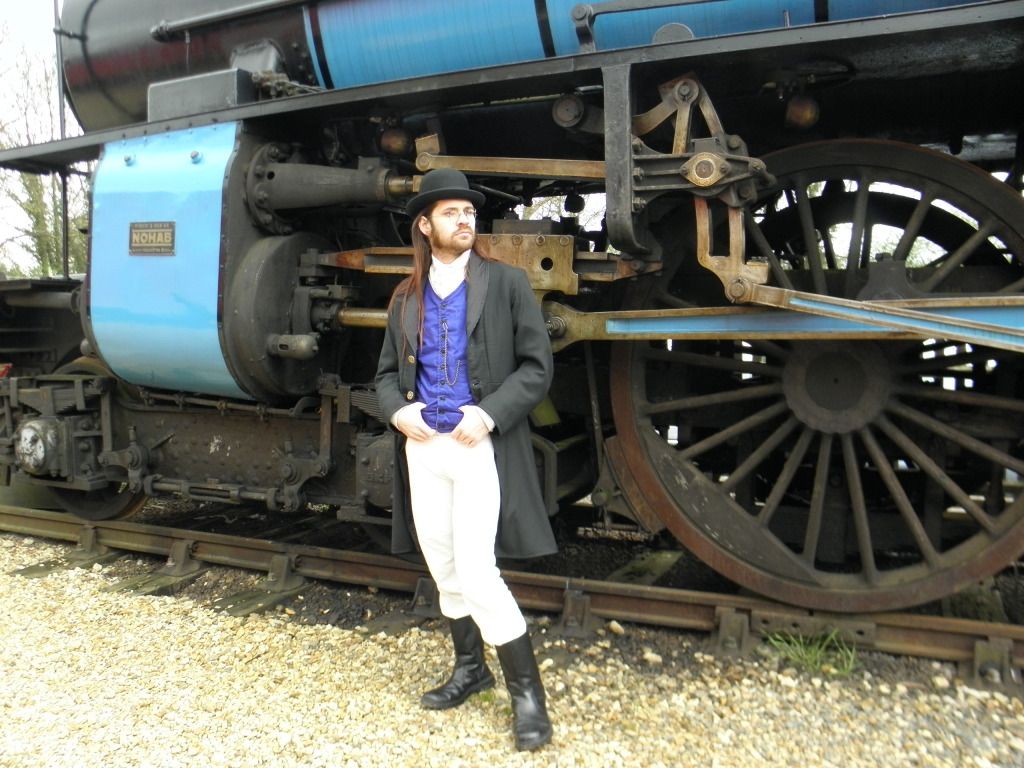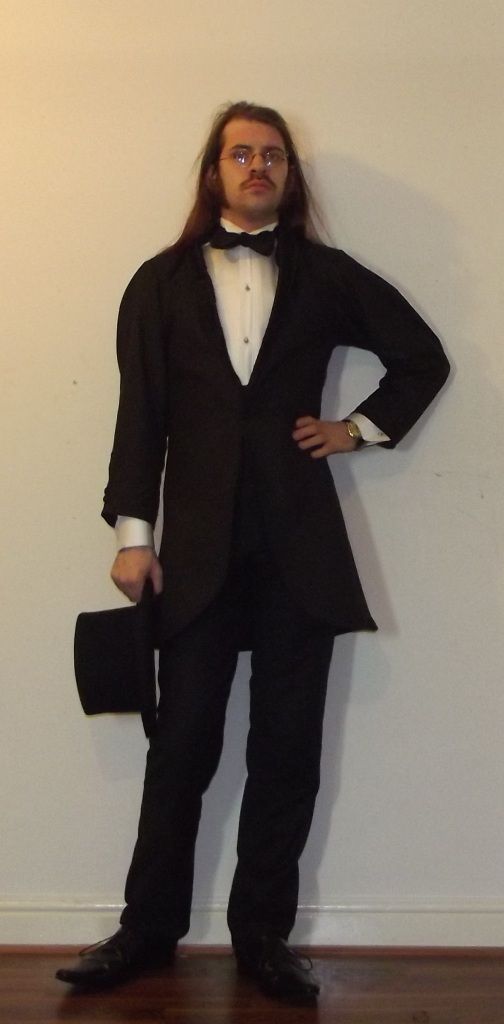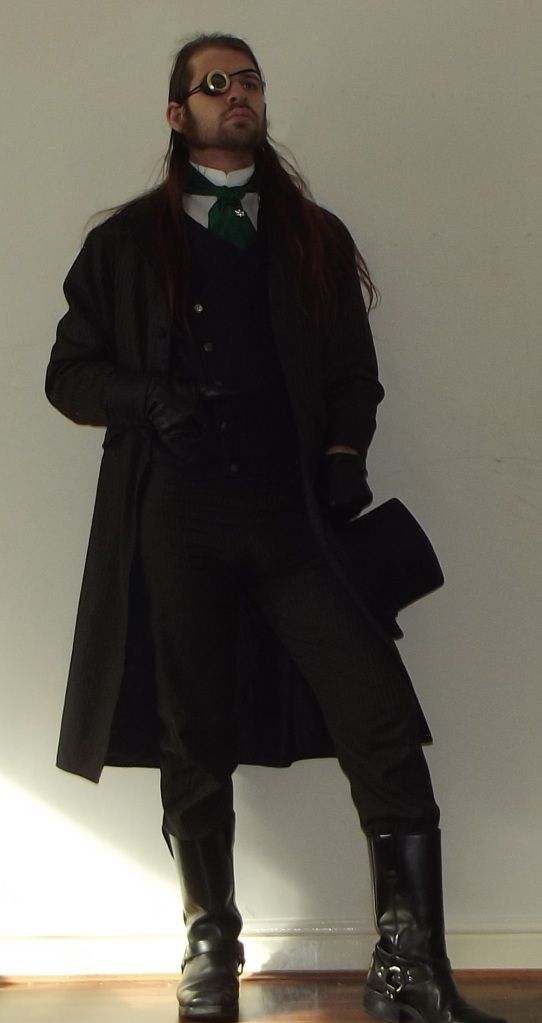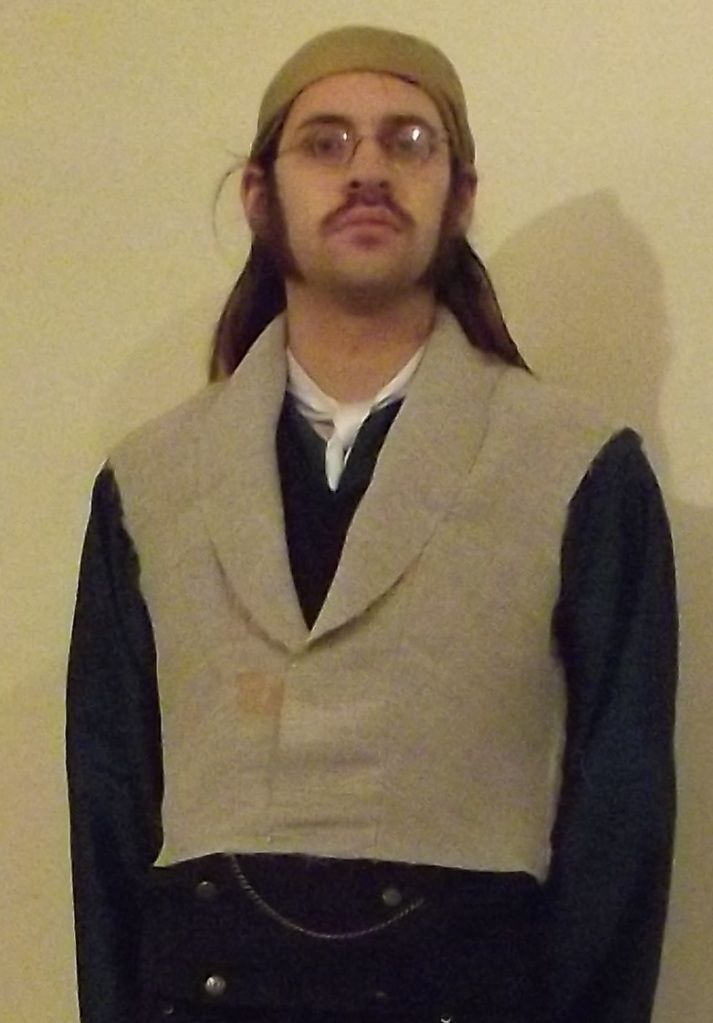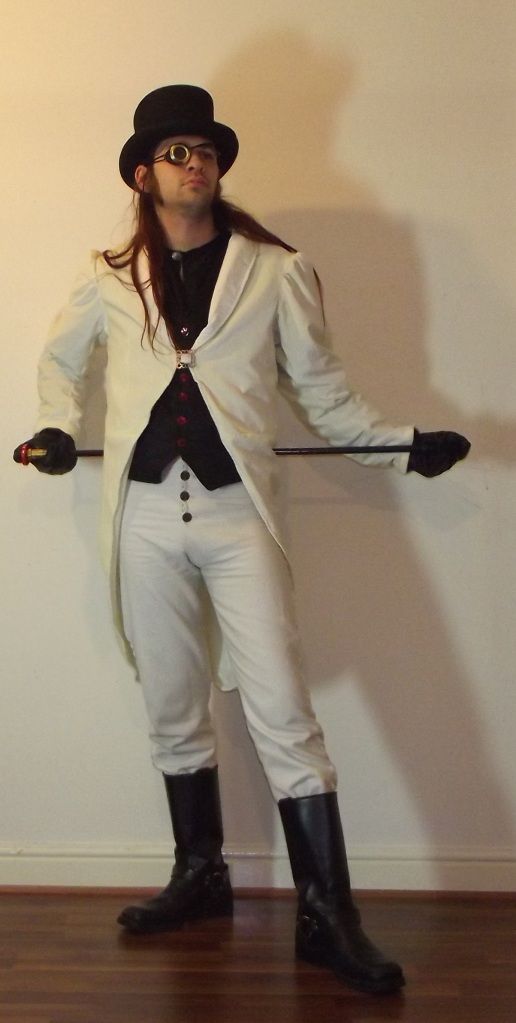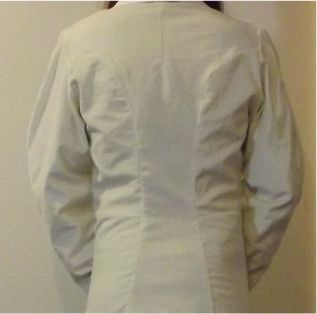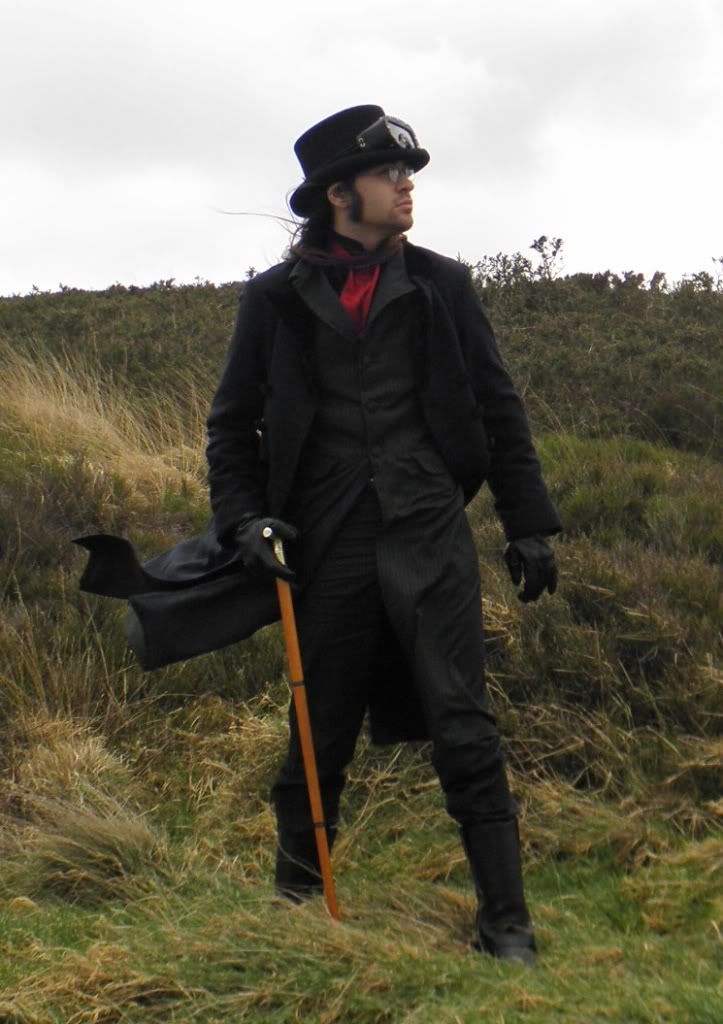Above: Cotton calico, cut tight but not too tight.
The next few posts will be about trousers, with notes on trouser making, trouser design, trouser cut and trouser materials.
I will begin with the basics - materials.
Depending on the figure and height of the wearer, trousers generally require about a metre and a quarter of material, and if that material has a nap, this will have to be quite wide cloth. They will also require a lining.
Linings improve comfort, improve warmth, smooth the line and provide a last line of defence against the disaster that is a split seat seam*. Linings can be full, where the lining is as long as the trousers, or partial, where the lining terminates at some point down the leg. The latter is more normal, although there are some good reasons to choose a full lining. Those with wool allergies, for example, may find they can still wear woollen trousers with a full lining. Full linings also allow for rougher fabrics, such as heavy tweed, and provide greater warmth. Conversely, full linings can be too hot for summer. Given the cost of typical trouser lining materials, price really ought not be a factor in this decision.
I have yet to find a reason to line trousers in anything other than pure cotton.** Not only is it comfortable, it is readily available, cheap and pleasant to work.
For the body of the trousers, there is a much greater choice of materials. When making trousers as part of a suit, obviously they will take the same material as the other parts of the suit. This is likely to be determined by the requirements of the coat, as it is generally the most noticeable part of a suit. Otherwise one must consider the purpose of the trousers, and the season in which they are to be worn.
There are few things*** more pleasant than the warmth of winter woollen trousers as one trudges through the snow, or a pleasant breeze passing through calico in summer. Conversely those same winter trousers will be hell in summer, and northeasterly gales go through calico with even greater ease than summer breezes. For cold weather wear, wool is nearly unrivalled. Heavyweight worsted and woollen suitings are perfect for trouser making, as are all but the heaviest weights of tweed. Moleskin and corduroy are also ideal. Unlike coats, trousers ought to be washed fairly frequently, and while it is possible to launder wool onesself, dry-cleaning is often considered desirable, perhaps limiting wool a little. Anything wool can do, of course, can also be done by cashmere, albeit at greater expense. Otherwise, it is perfect. It is extremely pleasant to work and the end result is comfortable and practical. Velvets also work in winter, but it is my bitter experience that velvet trousers wear out very easily, and the high cost of velvet makes them a poor investment.
For summer, the choices of material are a little different. Wool can still be used, but lighter weights are ideal, especially those marked "cool wool". Thin cashmere is also ideal. Cottons and linens also come to the fore, but it is important to pick those of a sufficiently heavy weight, especially when the trousers are for a gent. The heavier weights of calico are good when used with a full lining, with cotton drill and the like also ideal. Denim will - regardless of cut - always look a little like jeans, but there is nothing wrong with that. Linens need to be picked according to similar criteria, and care must be taken with the cut to allow for the inevitable shrinkage.
Silk is an unusual choice for trousers, but it can work. One of the biggest challenges is finding silk of a suitable weight, although this can - to a certain degree - be offset with an appropriate lining. Gents trousers will always be difficult with silk, especially as it is usually better to make the trousers the most austere part of any outfit, and there are few things less austere than most silks. For those bold few who opt for silk trousers, there are other considerations to be born in mind. Silk is almost invariably affected by washing, and while sometimes that change is pleasant - as with washed dupions - the fact that a garment will significantly change after each of the first few washes must be borne in mind. Trousers generally get a lot of wear, and silk isn't always good at withstanding that. The exception to these points are those rare silks intended specifically for suit making.
Leather, while a magnificent material for trousers, is beyond the scope of this series, as I have yet to find a good supplier. Consequently my commentary on leather will be limited to the following observations. Leather will almost invariably require a full lining. Unusually, this lining ought to be of a slippery material, as the wrong side of leather is extremely rough and a certain degree of lubrication is needed from the lining to ensure free movement of the legs if the trousers are tight - which they should be. Due to the nature of leather, it may be necessary to add additional seams to allow the trousers to be made from smaller pieces.
Trousers will also require fastenings and a few other ingredients, which will be discussed at a later time.
*I have never had a seat seam split on any trousers I have made.
**Except, as noted, leather trousers.
***Well, quite a few things. In fact rather a lot of things are more pleasant, but it ranks highly nonetheless.
